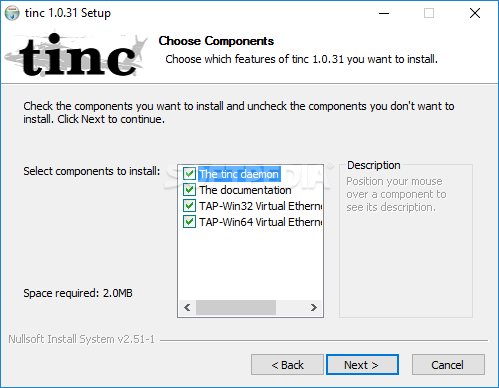
Using this method does not enable you to perform any conversion of the data at run time. The HasColumnType method enables mapping to different representations of the same basic type.

modelBuilder.Entity()Ĭonfiguring the Data Type of a Database Column You can use the IsUnicode method to specify that a string should be of varchar type. Map(m => m.MapKey("ChangedDepartmentID")) Ĭonfiguring whether a String Property Supports Unicode Contentīy default strings are Unicode (nvarchar in SQL Server). If you choose not to define a foreign key on a CLR type, but want to specify what name it should have in the database, do the following: modelBuilder.Entity() Renaming a Foreign Key That Is Not Defined in the Model The following example maps the Name CLR property to the DepartmentName database column. Mapping a CLR Property to a Specific Column in the Database modelBuilder.Entity().Ignore(t => t.Budget)
#Fluent tinc how to
The following example shows how to specify that a property on a CLR type is not mapped to a column in the database. Specifying Not to Map a CLR Property to a Column in the Database The following example configures the DepartmentID and Name properties to be the composite primary key of the Department type. modelBuilder.Entity().HasKey(t => t.InstructorID) In the following example, the HasKey method is used to configure the InstructorID primary key on the OfficeAssignment type. To explicitly set a property to be a primary key, you can use the HasKey method.

The options on the configuration object are specific to the type being configured IsUnicode is available only on string properties for example. The Property method is used to obtain a configuration object for a given property. The Property method is used to configure attributes for each property belonging to an entity or complex type.
#Fluent tinc code
For more details, see Custom Code First Conventions. Starting with EF6 you can create your own conventions to supplement the ones included in Code First. This default setting will be overridden for any objects that you explicitly configure a different schema for. Starting with EF6 you can use the HasDefaultSchema method on DbModelBuilder to specify the database schema to use for all tables, stored procedures, etc. Model-Wide Settings Default Schema (EF6 onwards) The following samples are designed to show how to do various tasks with the fluent api and allow you to copy the code out and customize it to suit your model, if you wish to see the model that they can be used with as-is then it is provided at the end of this article. The code first fluent API is most commonly accessed by overriding the OnModelCreating method on your derived DbContext. This article is designed to demonstrate how to use the fluent API to configure properties. The annotations only cover a subset of the fluent API functionality, so there are mapping scenarios that cannot be achieved using annotations. There are two main ways you can configure EF to use something other than conventions, namely annotations or EFs fluent API. Sometimes, however, you cannot or do not want to follow those conventions and need to map entities to something other than what the conventions dictate. Local mesh refinement controls can resolve geometry details appropriately, and poor CAD models can be improved in SpaceClaim/Discovery, or you can use Fluent's Fault Tolerant meshing workflow, which is robust to CAD faults.When working with Entity Framework Code First the default behavior is to map your POCO classes to tables using a set of conventions baked into EF. Poor mesh quality can also be caused by insufficient mesh resolution of geometry details or by poor underlying CAD. When selected, you will then enter the percentage of the total cells to be improved, and the number of iterations of smoothing sweeps performed. If you are in Fluent Solution mode, you can improve the mesh quality by selecting the improve the mesh option on the Quality button under the Domain tab. To improve the surface mesh, you will have to enter a face quality limit to target, and when improving the volume mesh, you will have to enter a cell quality limit value to target.

If you are still in the process of generating your mesh in Fluent Meshing mode, you can insert a task after both the 'Generate the Surface Mesh' task and 'Generate the Volume Mesh' task by right-clicking on either one and inserting a new 'Improve Mesh' task. Mesh quality can be improved in a variety of places in Ansys Fluent.


 0 kommentar(er)
0 kommentar(er)
